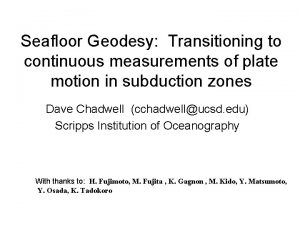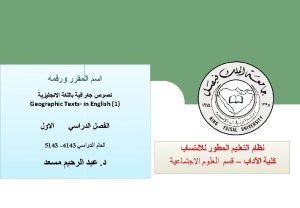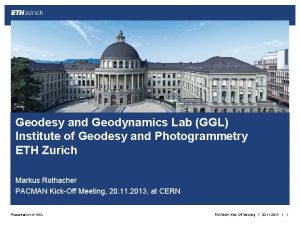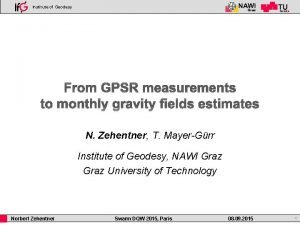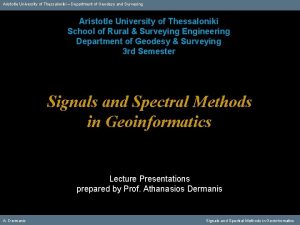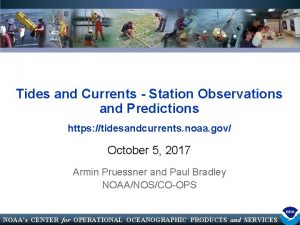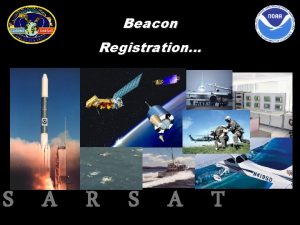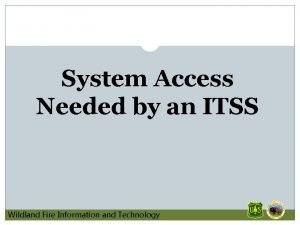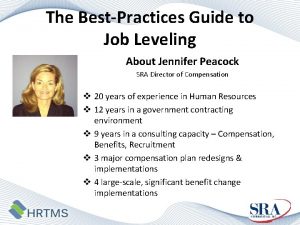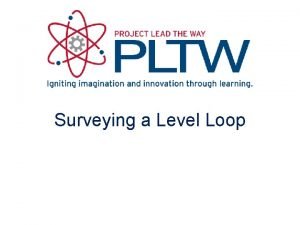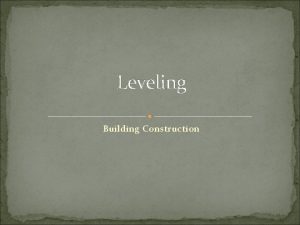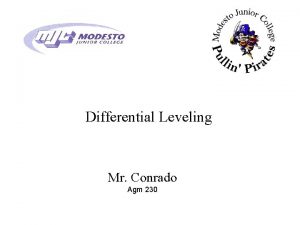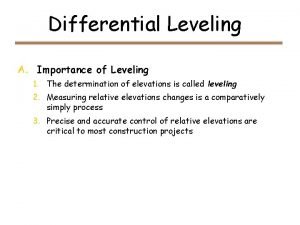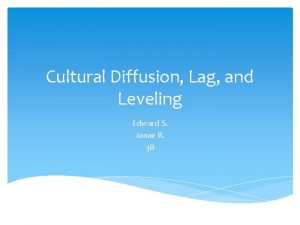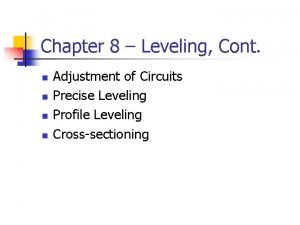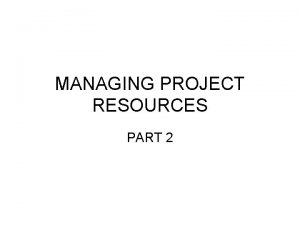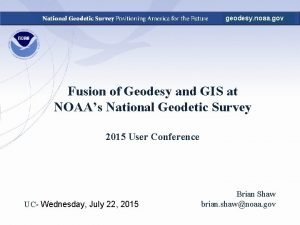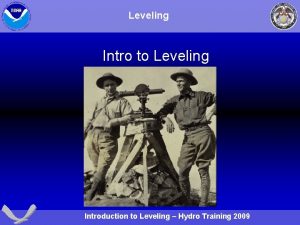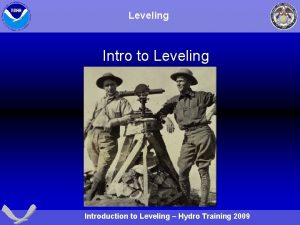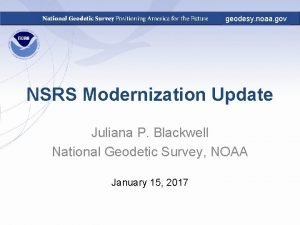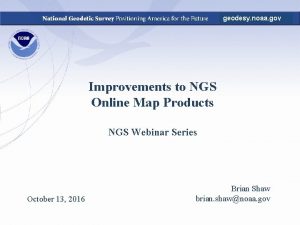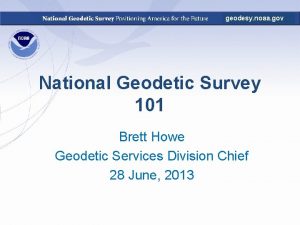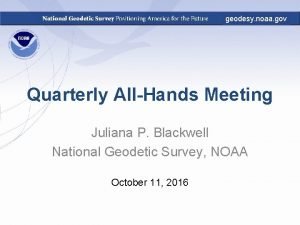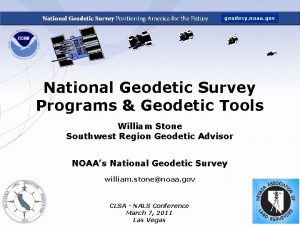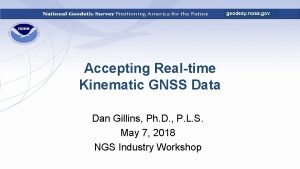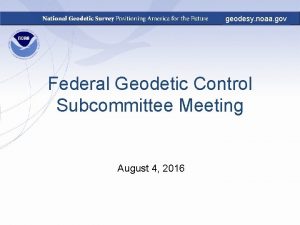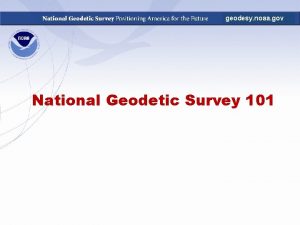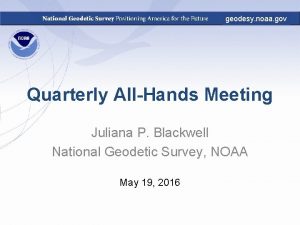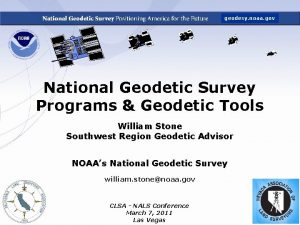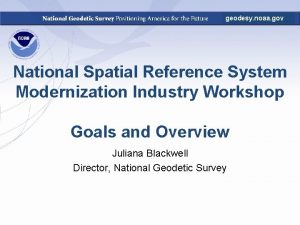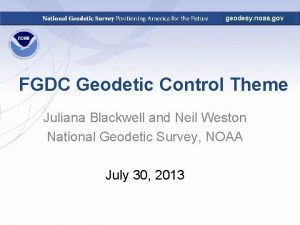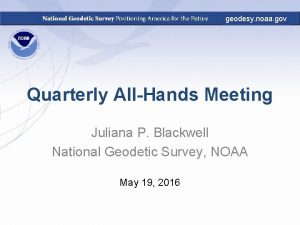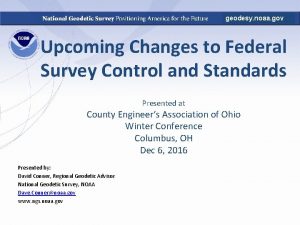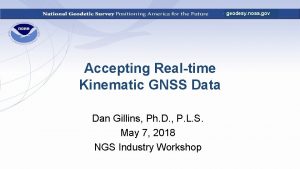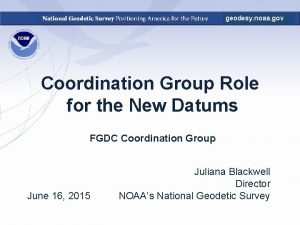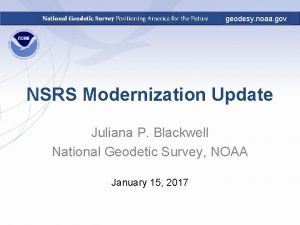geodesy noaa gov Leveling After 2022 Dan Gillins


























- Slides: 26

geodesy. noaa. gov Leveling After 2022 Dan Gillins, Ph. D. , P. L. S. April 25, 2017 Geospatial Summit 2017

Differential Leveling Rod 1 Setup of Leveling, Δn = B – F Rod 2 Foresight Backsight F B Δn SB 2 S SF

Differential Leveling Advantages: • Leveling is used to determine differences in heights between marks – Highly accurate (i. e. , mm to sub-mm) height differences can be obtained in less than one km Challenges: • A tedious process – Line-of-sight technology, restricted to 50 -100 m sight lengths; prone to blunders • Requires starting from a mark with a “known” height (i. e. , vertical control point or bench mark) 3

Heights on Bench Marks • NGS publishes orthometric heights on bench marks referenced to NAVD 88 • NAVD 88: – Realized by over 700, 000 km of leveling lines – Over 500, 000 monumented bench marks – Minimally Constrained adjustment, holding fixed the Father Point/Rimouski tide station in Canada 4

NAVD 88 Courtesy Brian Shaw

Challenges with NAVD 88 6 • Bench marks may not be in convenient locations or near a project area • Must assume the bench marks have not moved, and their published heights are without error • Bench marks are often destroyed and rarely replaced • Sparse number of bench marks outside of CONUS • Heights for the bench marks were derived from a single point, allowing error to build up across the country

Bias and Tilt of NAVD 88 7

NAPGD 2022 • The North American-Pacific Geopotential Datum of 2022 (NAPGD 2022) will replace NAVD 88 – Will not be realized by leveling between passive marks – Accessed by GNSS observations (referenced to NATRF 2022) and a high-accuracy gravimetric geoid model (GEOID 2022) 8

GNSS-Derived Orthometric Heights H≈h-N HNAPGD 2022 = h. NATRF 2022 – NGEOID 2022 h d i o s p i l l E n a e c O 9 Geoid N H

Advantages of NAPGD 2022 • Easily accessed by making GNSS observations – Establish vertical control in convenient locations – Level from this control to other stations in your survey – Possible to derive orthometric heights on marks at the time of your survey 10 • Enables monitoring orthometric heights on marks

Estimated Accuracy of GNSSDerived Height Differences h 2 h 1 d i o s p i l l E n a e c O 11 N 1 Geoid N 2

Accuracy of Leveling 12

Principles of Least Squares Two Components of a least squares adjustment: 1. Mathematical Model 2. Stochastic Model – How to weight your observations and constraints – Weights inversely proportional to variances 13

Case Study: GSVS 11 Austin • 325 km line from Austin to Rockport, TX • Static GPS collected on 218 stations (48 -h sessions) • First-order Class 2 geodetic leveling • Surface gravimetry Rockport 14

Preliminary Adjustments of Austin GSVS 11 • Free adjustment of leveling observations: – ΔH = 158. 454 m – σH, end = ± 0. 014 m • Simply differencing GNSSderived orthometric heights at each end of line: – ΔH = 158. 398 m – σH, ends ≈ ± 0. 04 m Rockport 15

GNSS+Leveling Adjustments ΔH H 2 ΔH H 1 16 Geoid

GNSS+Leveling Adjustments ΔH H 2 ΔH H 1 17 Geoid

GNSS+Leveling Adjustments ΔHadj H 2, adj ΔHadj H 1, adj 18 Ha Hb Hc Geoid Hd He Hf

Test Adjustment Results BM Input H (m) 2003 3006 159. 828 1. 430 Output H (m) Input Sigma (cm) 159. 851 ± 3. 5 1. 401 ± 4. 0 ΔHGNSS+L 158. 450 ΔHleveling 158. 454 Difference -0. 004 19 Output Sigma (cm) ± 2. 7 ± 2. 8 Hin Hout (cm) -2. 3 +2. 9

Test Adjustment Results 20

Additional Tests

Conclusions • GNSS and a high-accuracy geoid model connects network to NAPGD 2022 – (network accuracy) • Leveling improves accuracy of height differences between marks – (local accuracy) • Addition of leveling with GNSS increases overall redundancy in a survey network

Ongoing Research and Development • Develop models to combine and adjust GNSS -derived heights and/or observations with leveling • More tests with other GNSS+leveling projects • Add a new section to the NOS NGS Manual 3 on “Geodetic Leveling” • Provide guidance for the necessary spacing of vertical control from GNSS • Update FGCS specifications for leveling 23

OPUS-Projects for GNSS & Leveling 24 24

OPUS-Projects for GNSS & Leveling 25 25

Questions? 26 Dan Gillins Daniel. Gillins@noaa. gov
 After me after me after me
After me after me after me If any man wants to come after me
If any man wants to come after me Geodesy and geomatics engineering
Geodesy and geomatics engineering Seabed geodesy
Seabed geodesy Branches of geodesy
Branches of geodesy Institute of geodesy and photogrammetry
Institute of geodesy and photogrammetry Space geodesy facility
Space geodesy facility Geodesy
Geodesy Geodesy
Geodesy Tidesandcurrents
Tidesandcurrents Noaa epirb registration
Noaa epirb registration Www noaa gov
Www noaa gov Perbedaan antara resource loading dan resource levelling
Perbedaan antara resource loading dan resource levelling Ftp wildland fire
Ftp wildland fire Hrtms market share
Hrtms market share Closed loop survey
Closed loop survey Profile leveling
Profile leveling Ario practice problems
Ario practice problems Leveling in construction
Leveling in construction Eccentric leveling lugs
Eccentric leveling lugs Differential leveling field notes
Differential leveling field notes Differential leveling
Differential leveling Define cultural leveling
Define cultural leveling Resource allocation vs resource leveling
Resource allocation vs resource leveling Cont nn
Cont nn Ario organic chemistry
Ario organic chemistry Project crashing and resource leveling
Project crashing and resource leveling



